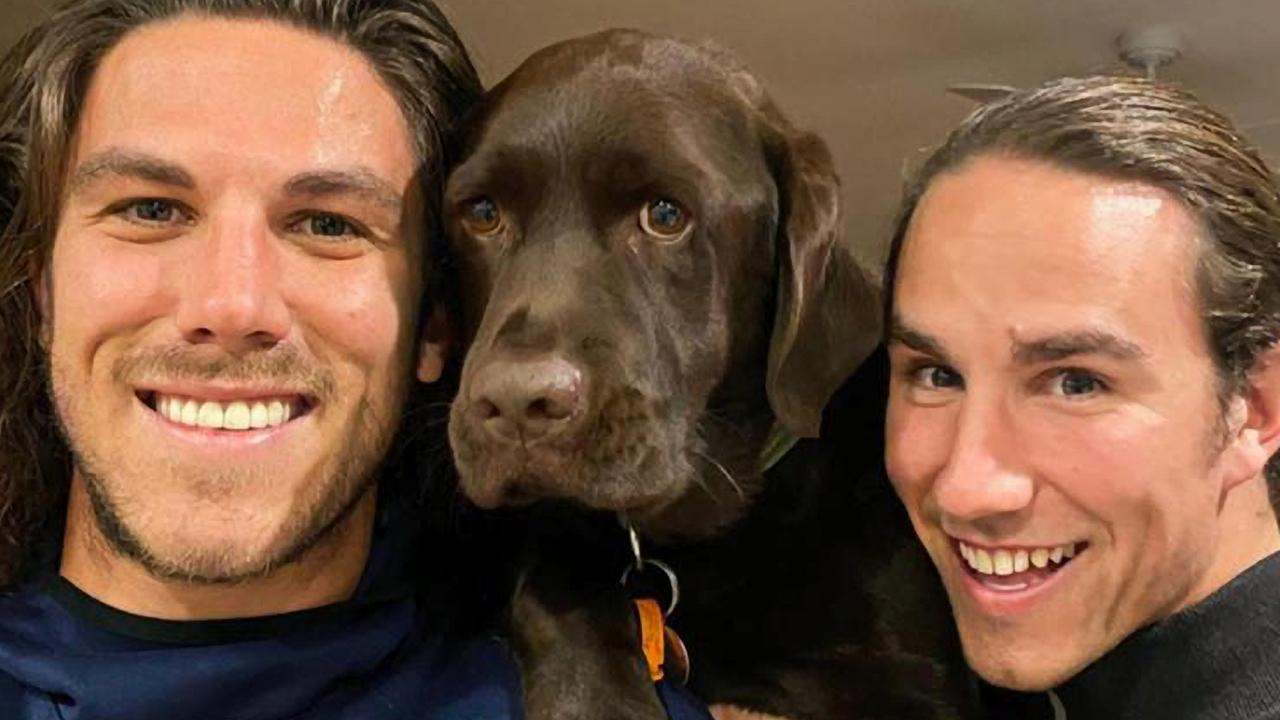‘Most hated woman in Australia: Inside the Folbigg case
Emotions run high when a mother is found to have murdered her children. But scientific experts want Kathleen Folbigg’s convictions overturned.
Crime in Focus
Don't miss out on the headlines from Crime in Focus. Followed categories will be added to My News.
What happened this week is unique in the annals of Australian criminal history: a petition endorsed by 90 top scientists, medical practitioners and science advocates – among them, two Nobel laureates – was handed to the Governor of New South Wales, calling for the pardon and immediate release of a woman convicted of killing all four of her children.
That woman is Kathleen Folbigg, variously described at the time of her convictions in 2003 as “Australia’s worst female serial killer”, “The most hated woman in Australia”, and worse. Emotions run high when a mother is found by a jury to have murdered her children in cold blood.
Uniquely in this case, it isn’t just Kathleen’s legal team, friends and supporters who want her convictions to be overturned. So too does an impressive array of medical and scientific experts. And some of their comments have been blunt.
“Given the scientific and medical evidence that now exists in this case, signing this petition was the right thing to do,” President of the Australian Academy of Science Professor John Shine told News Corp Australia.

“Expert advice should always be heard and listened to. It will always trump presumption,” Australia’s former Chief Scientist Professor Ian Chubb, said pointedly.
“The science in this particular case is compelling and cannot be ignored,” says Human Geneticist and Researcher Professor Jozef Gecz.
The petition, whose signatories include several Fellows of the Australian Academy of Science, highlights a troubling gulf in this case between science and the law; between those pre-eminent medical and scientific experts whose considered, expert opinion is that Kathleen Folbigg’s children died from identified natural causes, and those lawyers and judges who have pointedly rejected those views, relying instead on questionable coincidence evidence and their own subjective interpretation of the ambiguous diary ramblings of an anguished, grief-stricken woman, to condemn her as a murderess.
HOW DID WE GET TO THIS POINT?
In the years leading up to Kathleen Folbigg’s trial in 2003, the prevailing wisdom – in the words of the discredited British paediatrician Sir Roy Meadow – was: “One sudden infant death is a tragedy, two is suspicious and three is murder, until proved otherwise.”
Kathleen Folbigg had lost four of her own, and so it was easy to argue that she must have killed them.
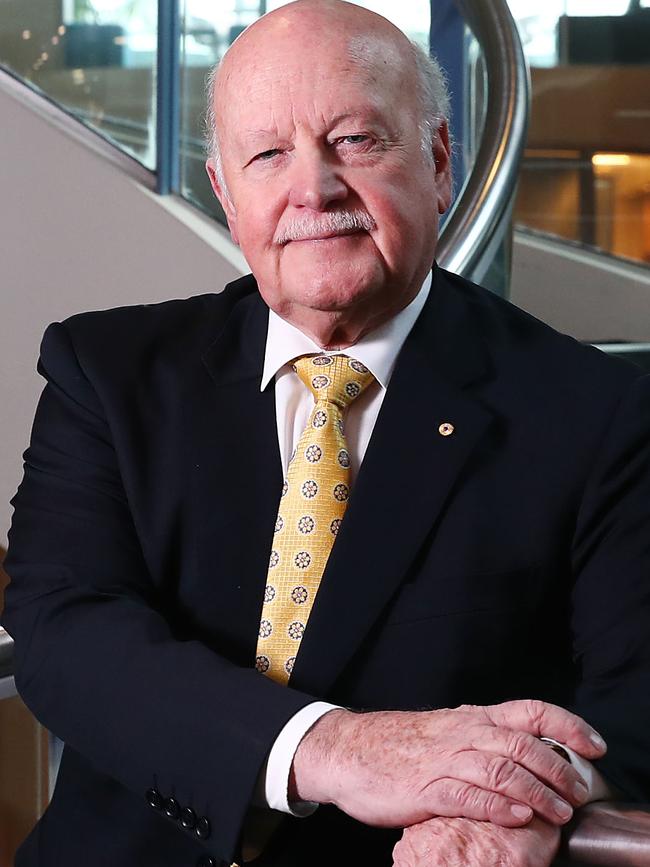

The case against Ms Folbigg was circumstantial. No forensic evidence existed to demonstrate that she had smothered any of her children – let alone all four. Instead, the jury was told that ambiguous entries in her private diaries amounted to confessions of guilt, and much was made of the fact that she had been the one to raise the alarm after finding, in turn, each of her children deceased.
In his closing address to the jury Mark Tedeschi QC, the trial prosecutor, disputed the suggestion that all four children had died from natural causes.
“I can’t disprove any of that,” he said with a rhetorical flourish, “but one day some piglets might be born from a sow, and the piglets might come out of the sow with wings on their back, and the next morning Farmer Joe might look out a kitchen window and see these piglets flying out of his farm. I can’t disprove that either.”
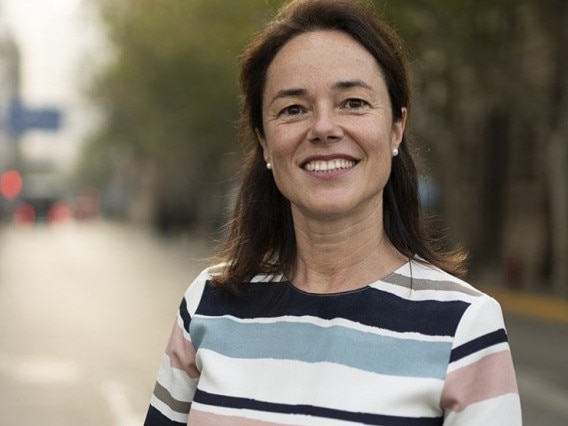
David Balding, Professor of Statistical Genetics at Melbourne University, regards Mr Tedeschi’s use of the pig analogy as “incredibly unprofessional”, and “pretty disgraceful,”.
He said: “I think that’s not a proper way for the state, the prosecution that represents the government and their people in principle, to behave.”
And, he points out, if cases of families with multiple children dying from natural causes are statistically rare, cases of mothers murdering their children, one after another, are also extremely rare.

THE CASE RE-EXAMINED
In 2015 the Melbourne based forensic pathologist Professor Stephen Cordner re-examined the evidence, concluding that: “There is no positive forensic pathology support for the contention that any or all of these children have been killed.”
Professor Cordner said it was surprising that in five alleged smothering events “there are no signs of smothering”.
Professor Cordner’s report, commissioned for an earlier petition on Ms Folbigg’s behalf, presented an uncomfortable challenge to New South Wales Health.
They asked Professor Johan Duflou, then Clinical Director of the Department of Forensic Medicine, to provide an urgent briefing note on the Cordner report. Professor Duflou called for a full-scale review of the case, but this didn’t happen.
“To my knowledge, my strong recommendation … that all four autopsies be reviewed in detail was not acted on,” he would later say.

While the Cordner report elicited no action, former Attorney-General, Gabrielle Upton and her successor Mark Speakman remained silent until in 2018, Nicholas Cowdery, the NSW Director of Public Prosecutions who had sanctioned the prosecution of Kathleen Folbigg, told the ABC that in his view, there had been an “inordinate delay” in dealing with the matter.
A third forensic pathologist, Matthew Orde, Clinical Associate Professor at the University of British Columbia, told the ABC’s Australian Story that, “Fundamentally, I’m in agreement with Professor Cordner, in that all four of these child deaths could be explained by natural causes.”
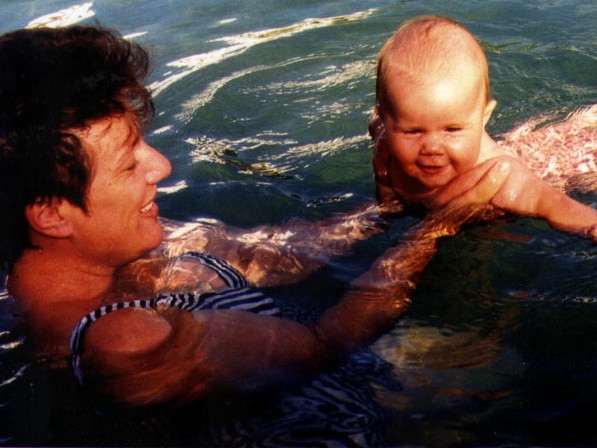
LAURA FOLBIGG
By this time there was clear evidence that Kathleen Folbigg’s fourth child Laura had died from natural causes. At autopsy following her death in 1999, she was found to have myocarditis – an inflammation of the heart muscle which can be fatal.
Dr Allan Cala, the New South Wales pathologist who carried out the autopsy, recorded the cause of death as “undetermined”, in light of the previous deaths of her three siblings.
He judged the myocarditis to be “patchy” and not life-threatening.
Professor Cordner, by contrast, found Laura’s death “has been caused unexceptionally by myocarditis.” When Dr Orde re-examined the slides of Laura’s heart muscle in 2018, he concluded that: “This is an eminently fatal case of myocarditis. Of course,” he added, “we can’t say for sure that this would have been the cause of death in Laura’s case. All I can say is I think this provides a very good explanation for her untimely death.”
Finally, in August 2018, Mark Speakman ordered an inquiry into Ms Folbigg’s convictions, to be headed by a former District Court Chief Judge, Reginald Blanch.

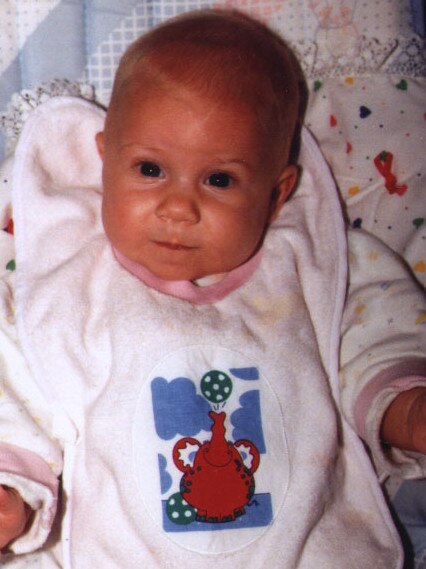
THE 2019 INQUIRY
As the inquiry hearings unfolded, Dr Cala, who had helped to trigger the homicide investigation following Laura’s death in 1999, acknowledged that: “With Laura, there’s undoubtedly myocarditis and I’ve said I can’t exclude that as being the cause of death.” Professors Cordner, Duflou and John Hilton, who had conducted the autopsy on Sarah, all indicated that they would have recorded Laura’s myocarditis as the cause of death in her case.
But the inquiry was not just a reconsideration of old evidence. Late in the day, fresh genetic evidence was presented, suggesting that a novel, hitherto undiscovered genetic mutation known as CALM2 G114R had played a part in the deaths of Kathleen Folbigg’s two daughters, Sarah and Laura.
Carola Vinuesa, Professor of Immunology and Genomic Medicine at the ANU, and a driving force behind this week’s petition, said: “From a technical perspective it was an incredible achievement. The Victorian Clinical Genomics Service sequenced entire genomes from neonatal heel-prick blood cards that were over 20 years old. We performed bioinformatic analysis of the approximately 3 billion base pairs of DNA for each subject.
“Unfortunately, the analysis was hindered by the fact that Craig Folbigg, the children’s father, declined to provide his DNA. I assumed the Inquiry would compel Craig to provide a saliva sample, as we requested, but it declined to make such an order.

“Despite this disadvantage, we found a novel, never-before reported, mutation in Sarah and Laura that had been inherited from Kathleen. The variant was in a gene called CALM2 (that encodes for calmodulin). Calmodulin variants can cause sudden cardiac death.”
Professor Vinuesa’s conclusions were backed by Professor Peter Schwartz, a cardiologist and world leading authority in genetic causes of cardiac arrhythmias and sudden unexpected death. Professor Schwartz reviewed the clinical and genetic information of the Folbigg family and wrote to the Inquiry, indicating the CALM2 variant was the likely cause of Sarah and Laura’s deaths.
He asked Justice Blanch to reopen the inquiry, but his request was refused. The views of other genetic experts called to give evidence to the inquiry were preferred over those of Professor Schwartz, Professor Vinuesa and her colleagues.
THE EUROPACE PAPER
Last year, following the conclusion of the inquiry, Professor Michael Toft Overgaard from Denmark, in collaboration with calmodulin experts from the US and Canada performed a series of experiments on the CALM2 variant. The 27 international authors of the resulting paper had their findings peer-reviewed and published in the highly regarded Oxford journal, Europace, concluding that the calmodulin variant likely precipitated the deaths of Sarah and Laura.
The authors indicated that Laura’s myocarditis may have been the event which triggered a lethal cardiac arrhythmia of the type known to be caused by calmodulin variants.
Professor Vinuesa and her colleagues also found that Kathleen’s boys, Caleb and Patrick had “biallelic rare missense variants in a gene, that when defective, causes early-onset lethal epilepsy in mice.”
These variants, she acknowledges, “require further investigation, but their existence highlights the fact that a single unifying cause is not required to explain the deaths of the four children. There are countless papers with cases of similar or overlapping phenotypes occurring in a single family but arising from different genetic aetiologies.”
Professor Vinuesa expected these discoveries, and any disagreements between her team and the team acting for the inquiry, to be taken seriously. She said that in the lead-up to the 2019 inquiry, “I was expecting the points of disagreement between the two genetics teams to have been referred to domain experts. But there were no domain experts invited to the hearings. There was not a single expert in the genetics of cardiac arrhythmias. There was a single cardiologist, who had publicly declared not to be a cardiac geneticist. And there were no calmodulin experts in the room.”
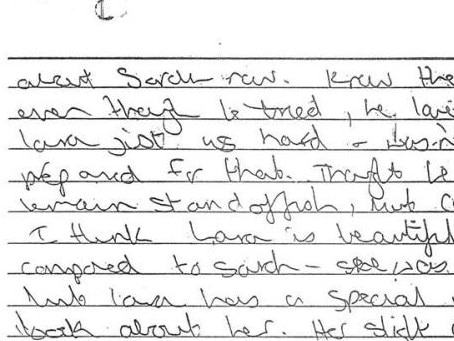
THE DIARIES
Kathleen Folbigg volunteered to appear at the inquiry to explain what she meant by the private entries in her diaries. Over nearly two days, sometimes weeping under the stress, she was challenged repeatedly and insistently – around 70 times in all – by three different barristers, to admit that she had killed her children. She wouldn’t do so.
“Those diaries are written from a point of me always blaming myself,” she explained a year earlier. “I blamed myself for everything. I took so much of the responsibility, because that’s, as mothers, what you do.”
Despite her repeated denials of ever having harmed her children, Justice Blanch concluded that the evidence he had heard, including from Ms Folbigg, “reinforces her guilt”.
This week’s petition argues that “he made these findings based on his interpretation of Ms Folbigg’s journal entries.”
The petitioners also claim the inquiry’s findings run “counter to the scientific and medical evidence that now exists.”
This week’s petition argues that: “Based on evidence presented to the inquiry and the fresh scientific evidence obtained by the international group of experts that studied the CALM2 mutation, a reasonable person should have doubt about Ms Folbigg killing her four children. Deciding otherwise rejects medical science and the law that sets the standard of proof.”
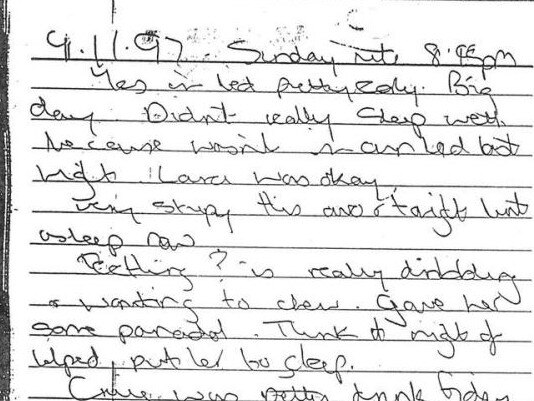
WHAT NEXT
Ms Folbigg is currently serving her sentence in Clarence Correctional Facility, near Grafton, NSW, where she was recently attacked by another inmate.
The petition to the NSW Governor said: “Ms Folbigg has suffered and continues to suffer emotional and psychological trauma and physical abuse in custody.”
Among the petition’s signatories is Professor George Fink from the Florey Institute, who said this week that he strongly supports the petition to pardon and release Kathleen Folbigg. “There is absolutely no forensic evidence that she murdered her four children. There is robust evidence that the death of her children was due to one or more genetic mutations.”
Another signatory, child and public health researcher Professor Fiona Stanley, says: “It is deeply concerning that medical and scientific evidence has been ignored in preference of circumstantial evidence. We now have an alternative explanation for the death of the Folbigg children.”
The latest genetic discoveries in Kathleen Folbigg’s case may not mirror the matinee jacket in the Lindy Chamberlain case, but they do raise the real possibility that the woman in Clarence Correctional Facility is innocent. Imagine for a moment how she must feel this week, after learning that two Nobel laureates are calling for her release.
Dr Matthew Orde’s Twitter page carries a quote from Voltaire: “To the living we owe respect; to the dead we owe only the truth.” The question now is: will Kathleen Folbigg be granted that respect and will the truth owed to her children finally be acknowledged?
FULL LIST: EXPERTS BACKING KATHLEEN FOLBIGG
Professor John Shine, Australian Academy of Science president, 2010 winner of Prime Minister’s Prize for Science, renowned biochemist.
Emeritus Professor Elizabeth Blackburn, Tasmanian-born scientist, 2009 Nobel Laureate.
Professor Peter Doherty, 1996 Nobel Laureate, 1997 Australian of the Year, patron and namesake of the Doherty Institute at the University of Melbourne.
Professor Fiona Stanley, distinguished research professor, University of Western Australia, 2003 Australian of the Year.
Professor Ian Frazer, 2006 Australian of the Year, co-inventor of the vaccine which prevents cervical cancer.
Emeritus Professor Richard Larkins, former VC Monash University, former Chancellor LaTrobe University, former chairman of the National Health and Medical Research Council.
Professor Cheryl E Praeger, winner 2019 Prime Minister’s Prize for Science, Emeritus Professor of Mathematics at the University of Western Australia.
Professor Peter J. Schwartz, head of the Center for Cardiac Arrhythmias of Genetic Origin, Italy.
Professor Michael Toft Overgaard, head of the Department of Chemistry and Bioscience at Aalborg University, Denmark.
Professor Chris Semsarian, internationally recognised cardiologist, Professor of Medicine, University of Sydney.
Laureate Professor Ingrid E Scheffer, president of the Australian Academy of Health and Medical Sciences, senior fellow at the Murdoch Children’s Research Institute.
Dr Hariharan Raju, cardiologist at Concord Hospital Sydney, Associate Professor, Macquarie University.
Professor S.R. Wayne Chen, exert on cardiac arrhythmias and sudden death, Professor of Physiology and Pharmacology, University of Calgary, Canada.
Professor Hamish S Scott, head of Department of Genetics and Molecular Pathology, Centre for Cancer Biology, Adelaide.
Professor Carola G Vinuesa, co-director, Centre for Personalised Immunology, Australian National University.
Professor Jonathan Carapetis, director Telethon Kids Institute, pediatrician, Perth Children’s Hospital.
Professor Josef Gecz, pediatric geneticist and chair of Channel 7 Children’s Research Foundation for the Prevention of Childhood Disability.
Professor David J Tremethick, head of the Department of Genome Sciences, John Curtin School of Medical Research, ANU.
Associate Professor Hugo Gold, founding medical doctor, Children’s Bioethics Centre, Royal Children’s Hospital, Melbourne.
Professor Ira Shoulson, professor of neurology, pharmacology and human science and director of the Program for Regulatory Science and Medicine, Georgetown University, USA.
Emeritus Scientia Professor Eugenie R Lumbers, expert in systems physiology and pharmacology, cardiovascular and renal fetal and development physiology.
Emeritus Professor Barry Boettcher, foundation professor of biological sciences, University of Newcastle.
Professor Greg Stuart, head of the Eccles Institute of Neuroscience, John Curtin School of Medical Research, ANU.
Professor Wendy Hoy, Professor of Medicine and Director of the Centre for Chronic Disease at the University of Queensland.
Professor Johan Duflou, forensic pathologist and clinical professor at the University of Sydney.
Professor Melanie Bahlo, Walter and Eliza Hall Institute (WEHI) in Melbourne laboratory head, human genetics.
Professor E Marelyn Wintour-Coghlan, scientist, physiologist, Professor at Monash University.
Dr Orna Berry, former chief scientist of Israel, expert adviser to the European Union on science and technology, Israel.
Dr Sue Meek, former chief executive of the Australian Academy of Science.
Professor Angel F Lopez, head of human immunology, SA Pathology, Adelaide.
Professor Matthew Cook, professor of medicine at ANU, director of immunology at Canberra Hospital.
Emeritus Professor Helene Marsh, distinguished professor of Environmental Science at James Cook University.
Adjunct Professor Paul N Goldwater, SIDS researcher, professor of Pediatric Infectious Diseases and Clinical Microbiology, University of Adelaide.
Professor Jonathan Sprent, professor of immunology, Garvan Institute of Medical Research, Sydney.
Professor Graham Mann, director, John Curtin School of Medical Research, ANU.
Professor Oliver Mayo, evolutionary geneticist, adjunct professor of biology at the University of Adelaide.
Professor Stephen Alexander, professor of pediatrics and child health, Westmead Hospital.
Professor Ruth Arkell, professor of genetics and embryology at John Curtin School of Medical Research, ANU.
Professor Ehsan Arabzadeh, group leader, Eccles Institute of Neuroscience, John Curtin School of Medical Research, ANU.
Professor John M Bekkers, professor of neuroscience, deputy director John Curtin School of Medical Research, ANU.
Dr Maria Cecilia Garcia Rudaz, senior lecturer, School of Medicine, ANU.
Professor Caroline Blackwell, conjoint professor, School of Biomedical Sciences and
Pharmacy, University of Newcastle.
Professor Sarah A Robertson, director, Robinson Research Institute for Reproduction, Pregnancy and Child Health, University of Adelaide.
Associate Professor Tamas Fischer, Associate Professor at the John Curtin School of Medical Research, ANU, head of epigenetics and genomic stability group.
Associate Professor Riccardo Natoli, head of the Clear Vision Research Lab, John Curtin School of Medical Research, ANU.
Dr Bahar Miraghazadeh, researcher at Department of Immunology, John Curtin School of Medical Research, ANU.
Dr Roslyn Prinsley, Head, Strategic Research Initiatives, Office of the Deputy Vice Chancellor, Research and Innovation at ANU.
Dr Nathalie Dehorter, research fellow at the Eccles Institute of Neuroscience, John Curtin School of Medical Research, ANU.
Dr Marcin Adamski, senior lecturer, Research School of Biology, ANU.
Dr Todor Arsov, honorary senior research fellow, John Curtin School of Medical Research, general counsellor at the Medical School in Skopje, North Macedonia.
Dr Percy Wong, senior researcher University of Sydney, former principal research scientist, NSW department of Agriculture.
Dr Barbara B. R. de Oliveria Mendes, geneticist at the Institute of Thorax, France.
Dr Vicki Athanasopoulos, molecular biology expert, researcher at the John Curtin School of Medical Research, ANU.
Dr Catherine Regan, senior lecturer, Department of Rural Health at the University of Newcastle.
Yafei Zhang, next generation sequencing manager, Australian Phenomics Facility, ANU.
Dr Leon Kempler, chairman of Questacon.
Peter Yates, chairman for the Centre of Personalised Immunology and member of the advisory board for the Australian Genomics Health Alliance.
Anna-Maria Arabia, chief executive of the Australian Academy of Science, former CEO of Science and Technology Australia.
Emeritus Professor Ian Chubb, former Australian Chief Scientist and former vice-chancellor of ANU and Flinders universities.
David Wallace, health lawyer with expertise in genomic evidence.
Associate Professor Mette Nyegaard, pioneering researcher in genomics, Aarhus University, Denmark.
Assistant Professor Ivy E. Dick from the University of Maryland’s School of Medicine.
Professor Reza Razavi, professor of pediatric cardiovascular science at Kings College, London.
Professor John Funder, former president of the Australian Society for Medical Research.
Professor Flavien Charpentier, research director at the Thorax Institute, France.
Professor Douglas J. Hilton, director, Walter and Eliza Hall Institute of Medical Research, Melbourne.
Dr Malene Brohus, postdoctoral fellow, Department of Chemistry and Bioscience, Aalborg University, Denmark.
Dr Helene Halkjaer Jensen, postdoctoral fellow, Department of Chemistry and Bioscience, Aalborg University, Denmark.
Professor Matt Brown, professor of medicine, King’s College, London.
Dr Dan Andrews, laboratory head, genome informatics, John Curtin School of Medical Research, ANU.
Conjoint ProfessorMatthew Edwards, clinical geneticist, NSW.
Professor Leanne Dibbens, head of genetics and genomics, Australian Centre for Precision Health.
Dr Michael Ricos, senior research fellow, Australian Centre for Precision Health.
Associate Professor Tracy Dudding-Byth, senior consultant clinical geneticist, conjoint professor, University of Newcastle.
Professor David Balding, professor of statistical genetics, president-elect International Genetic Epidemiology Society.
Professor Terence Speed, 2013 winner Prime Minister’s Prize for Science, laboratory head, bioinformatics division, Walter and Eliza Hall Institute for Medical Research.
Professor Ian H Sloan, president of the Royal Society of NSW.
Scientia Professor George Paxinos, senior principal research fellow with the National Health and Medical Research Centre.
Professor Jane Blood-Siegfried, director of global education programs and initiatives, Duke University School of Nursing, USA.
Professor George Fink, professorial research fellow at the Florey Institute of Neuroscience and Mental Health at the University of Melbourne.
Erica Kneipp, head of research strategy, ANU College of Health and Medicine.
Dr Simon Jiang, nephrologist, Canberra Hospital, and research fellow of molecular genetics and personalized medicine at ANU.
Professor Assa Doron, professor, head of anthropology, School of Culture, History and Language, ANU.
Dr Amanda Boyce, expertise in renal and cardiac developmental physiology.
Dr Alex Bahar-Fuchs, senior research fellow, clinical neuropsychologist.
Dr David Burton, psychiatrist, NSW.
Dr Julie Blasioli, general manager laboratory research, Peter MacCallum Cancer Centre.
Dr Paula Gonzalez-Figueroa, ANU researcher, expertise in protein biology and immunology.
Dr Manuel Navarro-Gonzalez, toxicologist, NSW.
Dr Jonathan Roco, expertise in sequencing and immunology, John Curtin School of Medical Research, ANU.
Originally published as ‘Most hated woman in Australia: Inside the Folbigg case


